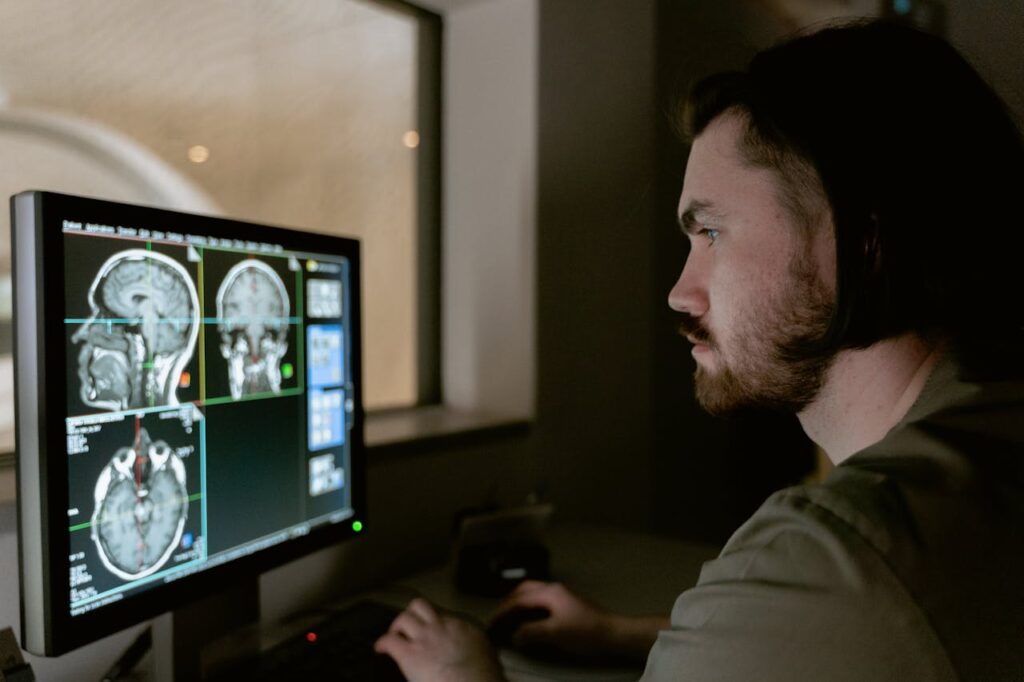Have you ever caught a fleeting expression on someone’s face that seemed to reveal more than their words? That was likely a microexpression, a tiny, involuntary facial movement that can expose what a person is truly feeling, even if they’re trying to hide it. Microexpressions are like emotional breadcrumbs, offering a glimpse into the hidden layers of human emotions.
Understanding microexpressions can be incredibly valuable for improving communication, building empathy, and even detecting deception. But how do these tiny expressions work, and what’s going on in our brains when they occur? Let’s dive into the science behind microexpressions and explore how you can start recognizing them in your daily interactions.
1. The Neuroscience of Microexpressions

Microexpressions are controlled by a sophisticated interplay of brain regions and facial muscles. Here’s how it all comes together:
The Role of the Brain in Facial Muscle Control
Your face is like a canvas, and your brain is the artist, using a network of muscles to paint expressions that convey your emotions. The facial nerve, known as the seventh cranial nerve, plays a pivotal role in sending signals from the brain to these muscles. When you feel an emotion, whether it’s happiness, anger, or fear, your brain sends a signal to specific facial muscles to create the corresponding expression.
The Limbic System and Its Connection to Emotions
At the heart of your emotional responses is the limbic system, a group of brain structures that includes the amygdala, hippocampus, and hypothalamus. This system processes emotions and triggers the facial expressions associated with them. The limbic system acts quickly and subconsciously, which is why microexpressions often appear before we have time to control them consciously.
The Amygdala and Its Role in Processing Fear and Threat
The amygdala, a small but powerful part of the limbic system, is crucial in processing emotions, particularly fear and threat. When you perceive something as a danger, the amygdala kicks into gear, causing rapid facial expressions—like widening your eyes or raising your eyebrows—that can appear as microexpressions of fear or anxiety.
The Prefrontal Cortex and Its Involvement in Emotion Regulation and Conscious Control
While the limbic system generates emotional responses, the prefrontal cortex helps regulate them. Located at the front of your brain, the prefrontal cortex is responsible for higher-order thinking, including decision-making and impulse control. It can suppress certain facial expressions, which is why you might be able to maintain a neutral face even when you’re feeling upset. However, microexpressions often slip through before the prefrontal cortex has a chance to intervene.
2. How Microexpressions Occur
Microexpressions are fascinating because they happen so quickly and are often beyond our conscious control.
The Subconscious Nature of Microexpressions
Microexpressions are mostly subconscious. When an emotion is triggered, the brain sends signals to your facial muscles almost instantly, causing a microexpression. This rapid response happens without you even thinking about it, which is why these expressions can reveal your true feelings, even if you’re trying to mask them.
The Speed and Brevity of Microexpressions
One of the most intriguing aspects of microexpressions is their speed. They typically last only 1/25th to 1/5th of a second—so fast that most people miss them entirely unless they’re trained to spot them. Despite their brevity, these expressions can be incredibly telling, offering a peek into what someone is genuinely experiencing emotionally.
The Role of Evolutionary Biology in the Development of Microexpressions
Why do microexpressions exist in the first place? From an evolutionary standpoint, being able to quickly and accurately read emotions in others was crucial for survival. For early humans, recognizing a flash of fear or anger on someone’s face could mean the difference between life and death, signaling the presence of a predator or a potential conflict. This ability to detect microexpressions has been preserved throughout human evolution, underscoring their importance in social interactions.
3. Detecting and Analyzing Microexpressions
While microexpressions can provide valuable insights, they’re not always easy to spot. Here’s how you can start detecting them:
The Challenges of Recognizing Microexpressions
Because microexpressions are so quick, recognizing them can be challenging. Most people are not naturally adept at spotting these fleeting expressions and might miss them altogether. Even when you do notice a microexpression, interpreting it correctly requires understanding the context in which it occurs.
For instance, a slight furrowing of the brows might indicate confusion, anger, or concentration, depending on the situation. This is why practice and training are essential for accurately detecting and interpreting microexpressions.
Facial Action Coding System (FACS): A Tool for Analyzing Facial Movements
To help people analyze facial expressions, Dr. Paul Ekman developed the Facial Action Coding System (FACS), a comprehensive framework that breaks down facial movements into specific units called Action Units (AUs). Each AU corresponds to a movement of a particular facial muscle. For example, AU12 involves pulling up the corners of the mouth, which is associated with smiling, while AU4, the brow lowerer, is linked to frowning.
FACS allows trained individuals to decode facial expressions systematically, including microexpressions. By understanding which AUs are activated, you can determine the emotion behind a microexpression with greater accuracy.
The Role of Practice and Training in Improving Microexpression Detection
Like any skill, detecting microexpressions requires practice. Numerous training programs and tools are available to help you hone your ability to spot these quick expressions. These programs often include videos and images of people displaying microexpressions, allowing you to practice recognizing and interpreting them.
With consistent practice, you can improve your ability to detect microexpressions in real-time, making you more attuned to the emotions of those around you. This heightened awareness can enhance your communication skills and deepen your understanding of others.
4. Practical Examples of Microexpressions
To bring the concept of microexpressions to life, let’s look at a few practical examples:

Fear: Imagine you’re in a meeting, and your colleague is asked a challenging question. You notice their eyes widen and their eyebrows raise briefly—a classic microexpression of fear—before they compose themselves and smile. This quick flash of fear might suggest they’re anxious about answering the question, even if they try to appear confident.
Disgust: During a casual conversation, someone mentions a topic that you find off-putting. You might not say anything, but your nose wrinkles slightly and your upper lip raises for a split second—a microexpression of disgust. Even if you try to maintain a neutral face, this tiny expression could reveal your true feelings about the subject.
Surprise: You’re told some unexpected news, and before you have time to react, your eyebrows shoot up and your mouth opens slightly—a microexpression of surprise. This expression might last only a fraction of a second before you consciously control your reaction, but it gives away your initial shock.
5. Final thoughts
Microexpressions are a fascinating aspect of human communication, offering a glimpse into the emotions that often lie beneath the surface. By understanding the science behind microexpressions—how they originate in the brain, how quickly they occur, and how they can be detected—you can start to see these fleeting expressions in your daily interactions.
Whether you’re looking to improve your communication skills, build stronger relationships, or simply become more aware of the emotions of those around you, learning to recognize microexpressions is a valuable skill. With practice, you’ll be able to pick up on these subtle cues and gain deeper insights into the people you interact with every day.


